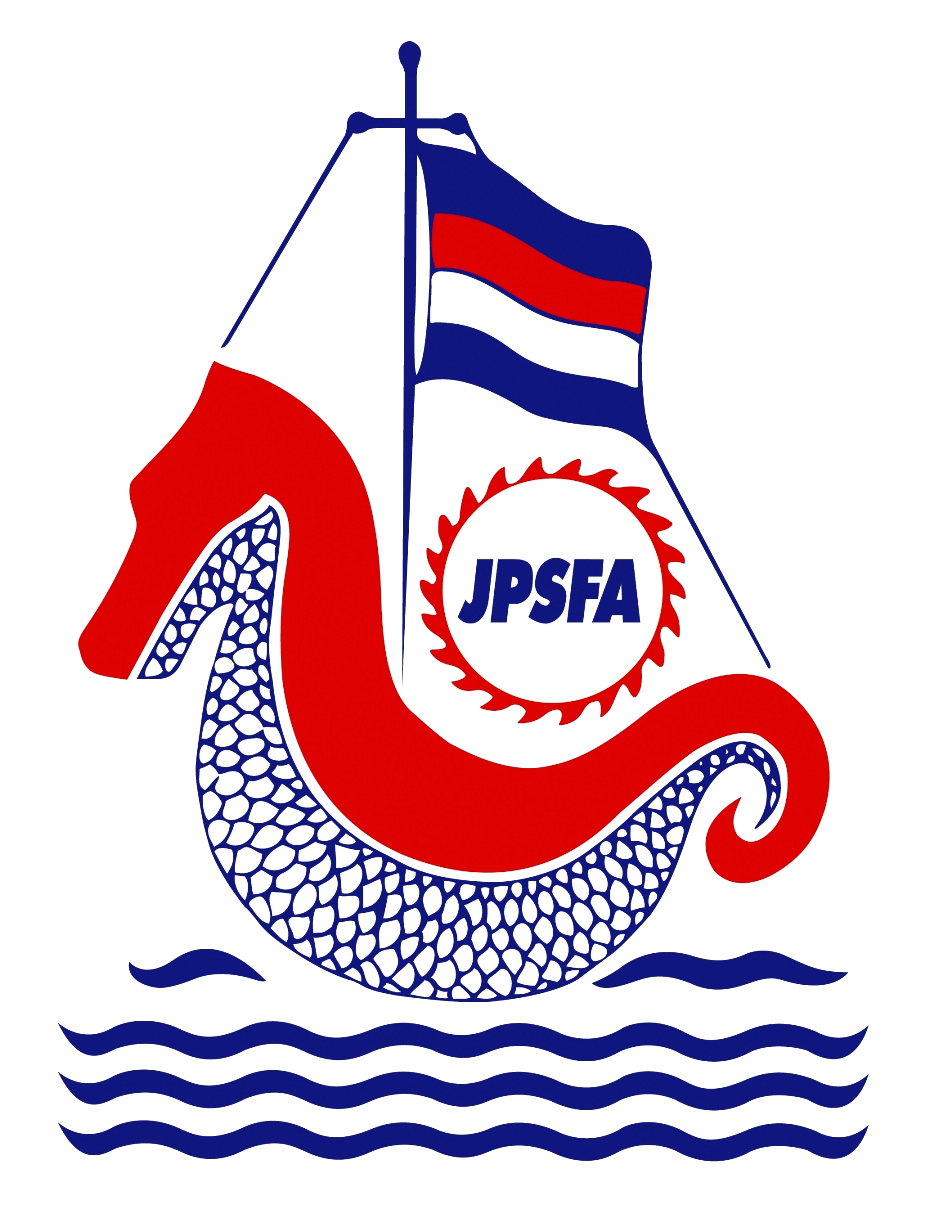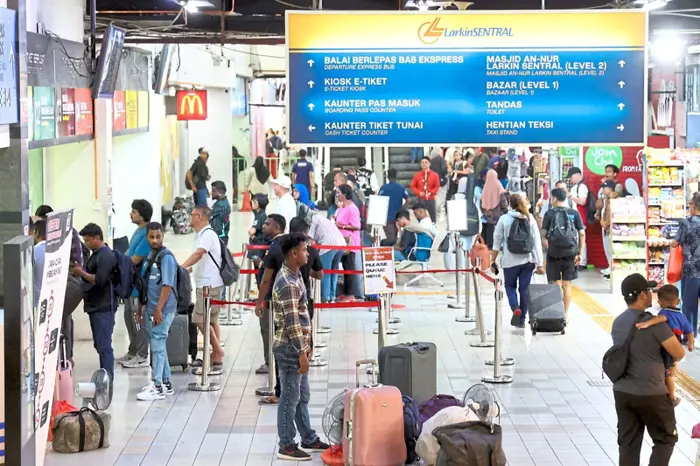Johor government is doubling down on efforts to upgrade its public transport systems, especially at key cross-border checkpoints, in a move to boost connectivity with Singapore ahead of Visit Johor 2026.
With over 60,000 daily commuters crossing between Johor and Singapore by bus alone, state authorities are prioritising improvements at high traffic locations such as the Customs, Immigration and Quarantine (CIQ) within Bangunan Sultan Iskandar (BSI) and Kompleks Sultan Abu Bakar (KSAB) checkpoints as well as Larkin Sentral.
State works, transportation, infrastructure and communication committee chairman Mohamad Fazli Mohamad Salleh said he conducted daily inspections to ensure smooth rollout of new measures while monitoring operations.
“This is a massive logistics challenge, but we are making progress.
“The improvements being implemented will not only benefit commuters, but support the tourism drive as Johor prepares to welcome more visitors next year,” he told StarMetro.
The Bukit Pasir assemblyman said among the measures was to prevent operational bottlenecks by segregating bus types at BSI.
Mohamad Fazli said shuttle buses at BSI were now using the right lane, while factory and express buses, the left.
“This ensures that shuttle buses making loops between BSI and Singapore’s Woodlands checkpoint are not obstructed by slower or longer-boarding vehicles.
“The result has been significant. We find shuttle buses completing more trips within a shorter time frame with passengers getting to their destinations faster.”
Mohamad Fazli said to complement this and prevent congestion, enforcement teams were present to ensure buses were not stopping in yellow box zones or staying too long in the bays.
He also said factory bus drivers were advised to clear the bays promptly after boarding passengers, to prevent traffic build-up at the CIQ BSI entrance.
“Commuters are being educated too on the proper use of boarding areas.
“Confusion over queue lines and service types such as public shuttle, factory or express, has been a frequent complaint.
“Many join the wrong line simply because they do not read the signage,” he noted.
“Now, we have put floor stickers and wayfinding signs directing them to the right gate.”
To tackle the pre-dawn rush, Johor is in talks with Singapore’s land transport authority (LTA) and requesting that its bus operators begin services at 4am instead of 5am.
Mohamad Fazli said Johor Baru passengers would start queueing at 4am, snaking all the way from bus bays to immigration halls.
“The Land Public Transport Agency (Apad) has submitted the proposal, and we are confident that LTA will find a solution with their operators soon,” he said.
Mohamad Fazli said that at Larkin Sentral – Johor’s main domestic bus terminal – similar efforts were underway to ease congestion and improve passenger experience.
He said there was congestion at Entrance B because passengers congregated there to check on bus arrivals.
To address this, he said passengers were now encouraged to use both entrances B and C.
“Large screens displaying real-time arrival information have been installed as well as speaker systems announcing boarding times.
“Despite this, many commuters still crowd at e-gates in hopes of scanning their tickets before the bus arrives,” he said.
“It does not work that way. The gate only opens when the bus is parked at the platform.”
Mohamad Fazli said to prevent crowding and confusion, two existing totem boards had been repurposed as bus arrival information panels, and extra queue stands introduced to improve commuter comfort and safety.
“Auxiliary police personnel have also been stationed at the terminal to ensure passengers do not gather unnecessarily at the gates, and enforce order during boarding.
“In addition to these operational changes, Larkin Sentral is undergoing a major RM2.5mil physical upgrade funded by Johor government,” he added.
The project, which began on April 8, is scheduled for completion by Sept 8.
The work involves construction of a new covered entrance, improved roofing at bus platforms, roadworks for better bus access, and upgraded security fence at departure bays.
“Construction is ahead of schedule, currently at 52%. This momentum is very encouraging,” said Mohamad Fazli.
He said restroom facilities at Platform A were also being upgraded.
“The men’s restroom was completed on June 11, while the women’s restroom is expected to be ready by Sept 8.
“These upgrades will further enhance Larkin Sentral’s image as Johor Baru’s main bus terminal, making it more welcoming for both locals and international visitors.”
He said the state government was committed to ensuring all infrastructure projects were completed on time for long-term comfort and convenience.
Works at Second Link
He said beyond BSI and Larkin Sentral, the state government was also making improvements at the Second Link, namely KSAB in Iskandar Puteri – a major entry point for those heading to Tuas.
According to Mohamad Fazli, 23 buses service the KSAB-Tuas route during peak hours, with some making up to 11 return trips between 4.30am and 9.30am.
“When traffic is smooth, it takes only five to eight minutes per trip,” he said.
“But if there is congestion on the Second Link, that journey can stretch to 40 minutes.”
Lack of designated bus bays at KSAB made managing boarding operations difficult, he said.
“Timekeepers, previously restricted, are now allowed on-site to coordinate departures.
“To cater to different commuter preferences, three lanes are set up at KSAB – two for seated passengers and one for those willing to stand,” he added.
Mohamad Fazli said elderly passengers, expectant mothers and persons with disabilities were allowed priority access to board buses directly without needing to queue up.
He advised those opting to sit in buses to be mindful of other passengers.
“We have seen cases of people blocking others from entering because they want to sit.
“To avoid delays, buses are now allowed to pick up passengers as soon as they pull up, even if the other buses have not fully boarded yet.
“However, this system will be monitored to prevent safety risks or crowd surges,” he said.
Reducing queue time
The MyBorderPass facial recognition system, Mohamad Fazli said, was increasingly popular at both BSI and KSAB, particularly among motorcyclists.
“Currently, there are 16 lanes – eight inbound and eight outbound.
“Johor is planning to add seven more at KSAB by August to reduce congestion.
“These lanes are efficient because riders do not need to show passports.
“They just scan their faces, which saves time and reduces queuing.”
Mohamad Fazli said that at BSI’s bus passenger immigration counters, commuters had three options – QR code lanes, e-gates and manual counters.
He said there were currently 68 e-gates (39 inbound and 29 outbound) which had significantly sped up the immigration clearance processing.
At the motorcycle lanes, riders have a choice between MyBorderPass, MBike systems and manual booths, allowing for smoother clearance based on personal preference.
The immigration process for cars, however, is dependent on manual counters, with 36 lanes split between inbound and outbound traffic.
“Car lanes are more complicated. Multiple passengers and different nationalities slow things down. To ease the situation, we are looking at introducing QR code scanners to automate part of this process.”
Mohamad Fazli said a pilot programme involving five QR code units for inbound and outbound car lanes was set to begin in August.
He said the authorities were also investigating reports of factory buses picking up non-factory workers at BSI.
“This practice not only violates regulations, it disrupts factory operations and risks the safety of passengers,” he added.
Helping taxi drivers
Meanwhile, Mohamad Fazli said Johor government was introducing an advertising initiative to supplement the income of local taxi drivers.
He said the state was collaborating with Johor Public Transport Corporation (PAJ) where 27 taxis had been identified for the first phase.
Through this initiative, each driver would earn RM200 per month and their respective associations RM100, he said.
He added that the aim was to increase the advertising initiative to 300 taxis.
The programme involves Gabungan Persatuan Teksi Berdaftar Johor Bahru (Gapet) and Persatuan Kebajikan Pemandu Teksi Lapangan Terbang (PKPTLTS).
Mohamad Fazli urged taxi drivers to support the initiative by keeping their vehicles clean while delivering quality service in their role as ambassadors for Johor.
“With these combined efforts, the state is easing congestion while paving the way for a smoother, more welcoming transport system for tourists.
“These are long-term changes. Our vision is to position Johor as a seamless gateway between Malaysia and Singapore, supported by efficient, safe and tourist-friendly public transport services.”
Mohamad Fazli said there would be regular monitoring and getting feedback to improve systems and introduce updates.
“The success of Visit Johor 2026 depends on our preparations now,” he added.
Reference : Johor drives transport upgrades, Singapore links | The Star

